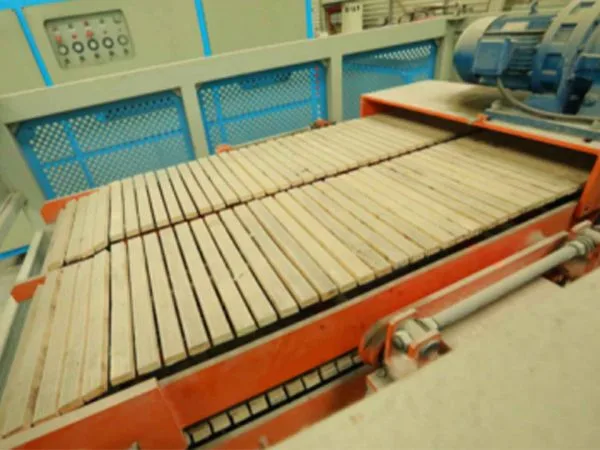Welcome to My Blog!
Before we dive into the content, I’d love for you to join me on my social media platforms where I share more insights, engage with the community, and post updates. Here’s how you can connect with me:
Facebook:https://www.facebook.com/profile.php?id=61567891941530
Now, let’s get started on our journey together. I hope you find the content here insightful, engaging, and valuable.
Caisu Machinery sells a variety of used plastic pipe production equipment. The products are of high quality and low price. Welcome to contact us for consultation and purchase. We will be happy to serve you.
Table of Contents
Introduction

In the quest for sustainable and environmentally friendly building materials, WPC Plastic Wood has emerged as a revolutionary solution. Combining the natural aesthetics of wood with the durability and low maintenance of plastic, WPC Plastic Wood offers a versatile and eco-friendly alternative for a wide range of applications.
This comprehensive guide will delve into the world of WPC Plastic Wood, exploring its advantages, practical uses, and how it can be a game-changer for both residential and commercial projects.
What is WPC Plastic Wood?
WPC Plastic Wood, also known as Wood-Plastic Composite (WPC), is an innovative building material that blends wood fibers or particles with thermoplastic resins such as polyethylene, polypropylene, or PVC. This unique combination creates a product that mimics the appearance of natural wood while offering superior durability, resistance to moisture, and low maintenance requirements. WPC Plastic Wood is designed to be an eco-friendly alternative to traditional wood, reducing the need for deforestation and providing a sustainable solution for modern construction needs.
The Environmental Benefits of WPC Plastic Wood
One of the most significant advantages of WPC Plastic Wood is its eco-friendly nature. Unlike traditional wood, which requires cutting down trees, WPC Plastic Wood is often made from recycled materials, including wood waste and plastic. This reduces the environmental impact associated with deforestation and helps in the conservation of natural resources. Additionally, WPC Plastic Wood is highly durable and resistant to rot, decay, and insect damage, which means it has a longer lifespan compared to natural wood. This longevity reduces the need for frequent replacements, further minimizing waste and environmental impact.
Applications of WPC Plastic Wood
The versatility of WPC Plastic Wood makes it suitable for a wide range of applications in both residential and commercial settings. Some of the most common uses include:
Outdoor Decking
WPC Plastic Wood is an ideal material for outdoor decking due to its resistance to moisture, UV rays, and extreme weather conditions. It does not splinter, warp, or rot, making it a safe and durable option for decks that require minimal maintenance.
Fencing
For those looking to create a beautiful and durable fence, WPC Plastic Wood offers an excellent solution. It provides the aesthetic appeal of wood without the need for painting or staining, and it is highly resistant to weathering and decay.
Siding
WPC Plastic Wood can also be used as siding for homes and commercial buildings. Its natural wood-like appearance enhances the curb appeal of any structure, while its durability ensures long-lasting protection against the elements.
Furniture
WPC Plastic Wood is increasingly being used in the production of outdoor furniture, such as patio sets, benches, and planters. Its resistance to moisture and UV rays makes it perfect for furniture that will be exposed to the elements.
Flooring
In addition to outdoor applications, WPC Plastic Wood can also be used for indoor flooring. It is water-resistant, easy to clean, and offers a natural wood-like appearance that can enhance the beauty of any room.
The Advantages of WPC Plastic Wood
WPC Plastic Wood offers numerous benefits that make it a superior choice compared to traditional wood and other building materials. Some of the key advantages include:
Durability
WPC Plastic Wood is highly resistant to moisture, rot, decay, and insect damage. This makes it an ideal material for outdoor applications where traditional wood would deteriorate quickly.
Low Maintenance
Unlike natural wood, which requires regular painting, staining, and sealing, WPC Plastic Wood requires minimal maintenance. It can be easily cleaned with soap and water, making it a hassle-free option for busy homeowners and businesses.
Aesthetic Appeal
WPC Plastic Wood is designed to mimic the appearance of natural wood, offering a wide range of colors and wood grain patterns. This allows it to blend seamlessly with any architectural style, providing both beauty and functionality.
Recyclability
Many WPC Plastic Wood products are made from recycled materials, and they can also be recycled at the end of their lifespan. This contributes to a circular economy and reduces waste in landfills.
Production Process of WPC Plastic Wood
The production process of WPC Plastic Wood involves several steps that ensure the creation of a high-quality and eco-friendly product. The process typically includes:
Material Preparation
Wood fibers or particles are combined with thermoplastic resins and other additives such as colorants, stabilizers, and lubricants. These materials are carefully selected to ensure the desired properties of the final product.
Extrusion
The mixture is then fed into an extruder, where it is heated and mixed thoroughly. The molten material is forced through a die to create the desired shape and profile of the WPC Plastic Wood product.
Cooling and Solidification
After extrusion, the material is cooled and solidified to form the final product. This process ensures that the WPC Plastic Wood maintains its shape and structural integrity.
Finishing
The finished WPC Plastic Wood products are then cut to size, sanded, and treated to enhance their appearance and durability. This may include applying a protective coating or adding surface textures to mimic the look of natural wood.
A Comprehensive Table of WPC Plastic Wood Properties
To provide a clearer understanding of WPC Plastic Wood and its properties, the following table summarizes key information:
| Property | Value |
|---|---|
| Density | 1.1 – 1.3 g/cm³ |
| Moisture Absorption | Low |
| UV Resistance | High |
| Thermal Expansion | Moderate |
| Impact Resistance | High |
| Recyclability | Yes |
| Maintenance Requirements | Low |
This table highlights the key characteristics of WPC Plastic Wood, emphasizing its durability, low maintenance, and eco-friendly nature.
WPC Plastic Wood vs. Traditional Wood
When comparing WPC Plastic Wood to traditional wood, several key differences become apparent. Traditional wood is susceptible to moisture, rot, and insect damage, requiring frequent maintenance and eventual replacement. In contrast, WPC Plastic Wood is highly resistant to these issues, offering a longer lifespan and lower maintenance requirements. Additionally, WPC Plastic Wood is often made from recycled materials, making it a more sustainable choice for environmentally conscious builders and homeowners.
The Role of WPC Plastic Wood in Sustainable Construction

As the construction industry moves towards more sustainable practices, WPC Plastic Wood plays a crucial role in reducing the environmental impact of building projects. By using recycled materials and offering a durable, low-maintenance alternative to traditional wood, WPC Plastic Wood helps to conserve natural resources and reduce waste. Its resistance to moisture and decay also means that it requires less chemical treatment compared to natural wood, further reducing its environmental footprint. For builders and architects committed to sustainable construction, WPC Plastic Wood is an essential material to consider.
Conclusion
WPC Plastic Wood is a versatile, durable, and eco-friendly building material that offers numerous advantages over traditional wood and other construction materials. Its resistance to moisture, rot, and insect damage, combined with its low maintenance requirements and aesthetic appeal, make it an ideal choice for a wide range of applications. As the demand for sustainable building solutions continues to grow, WPC Plastic Wood stands out as a material that can help builders and homeowners achieve their environmental goals without compromising on quality or aesthetics.
If you are interested in incorporating WPC Plastic Wood into your next project, contact us today to learn more about our high-quality WPC Plastic Wood equipment and how it can help you produce exceptional products for a sustainable future.
FAQ
What is WPC Plastic Wood made of?
WPC Plastic Wood is made from a combination of wood fibers or particles and thermoplastic resins such as polyethylene, polypropylene, or PVC. It may also include additives to enhance its properties.
Is WPC Plastic Wood environmentally friendly?
Yes, WPC Plastic Wood is an eco-friendly material. It is often made from recycled materials and reduces the need for deforestation. Additionally, its durability and low maintenance requirements contribute to a longer lifespan and less waste.
Can WPC Plastic Wood be recycled?
Yes, WPC Plastic Wood can be recycled at the end of its lifespan. This contributes to a circular economy and reduces waste in landfills.
What are the common applications of WPC Plastic Wood?
WPC Plastic Wood is commonly used for outdoor decking, fencing, siding, furniture, and indoor flooring. Its versatility makes it suitable for a wide range of residential and commercial applications.
How does WPC Plastic Wood compare to traditional wood?
WPC Plastic Wood is more durable, resistant to moisture and insect damage, and requires less maintenance compared to traditional wood. It is also a more sustainable option as it is often made from recycled materials.
Is WPC Plastic Wood expensive?
The cost of WPC Plastic Wood can vary depending on the product and application. However, its durability and low maintenance requirements can make it a cost-effective choice in the long run, reducing the need for frequent replacements and maintenance.





